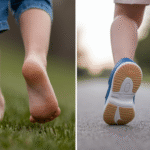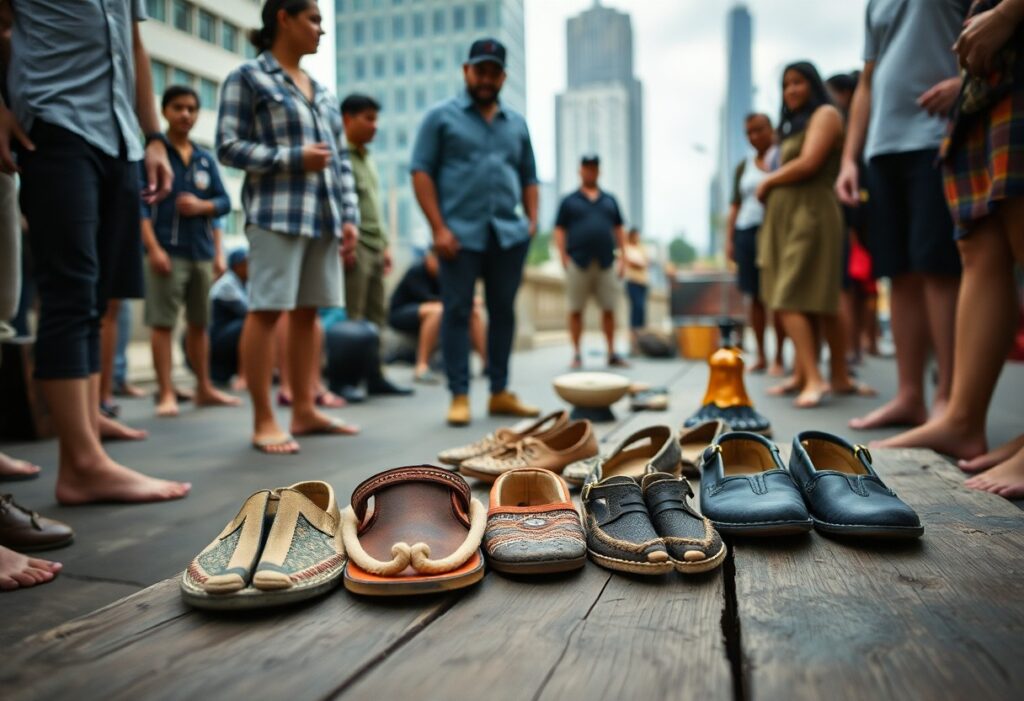
Exploring the world of barefoot footwear through the lens of cultural anthropology invites you to uncover intriguing narratives that connect the time-honoured traditions of Aboriginal cultures with today’s urban lifestyles. As you delve into this compelling transformation, you will uncover how cultural beliefs and practices related to minimalist footwear shape our perceptions of comfort, our bond with nature, and avenues for personal expression. This exploration not only broadens your understanding but also inspires a reevaluation of how your footwear choices may embody significant cultural meanings and reflect your personal identity.
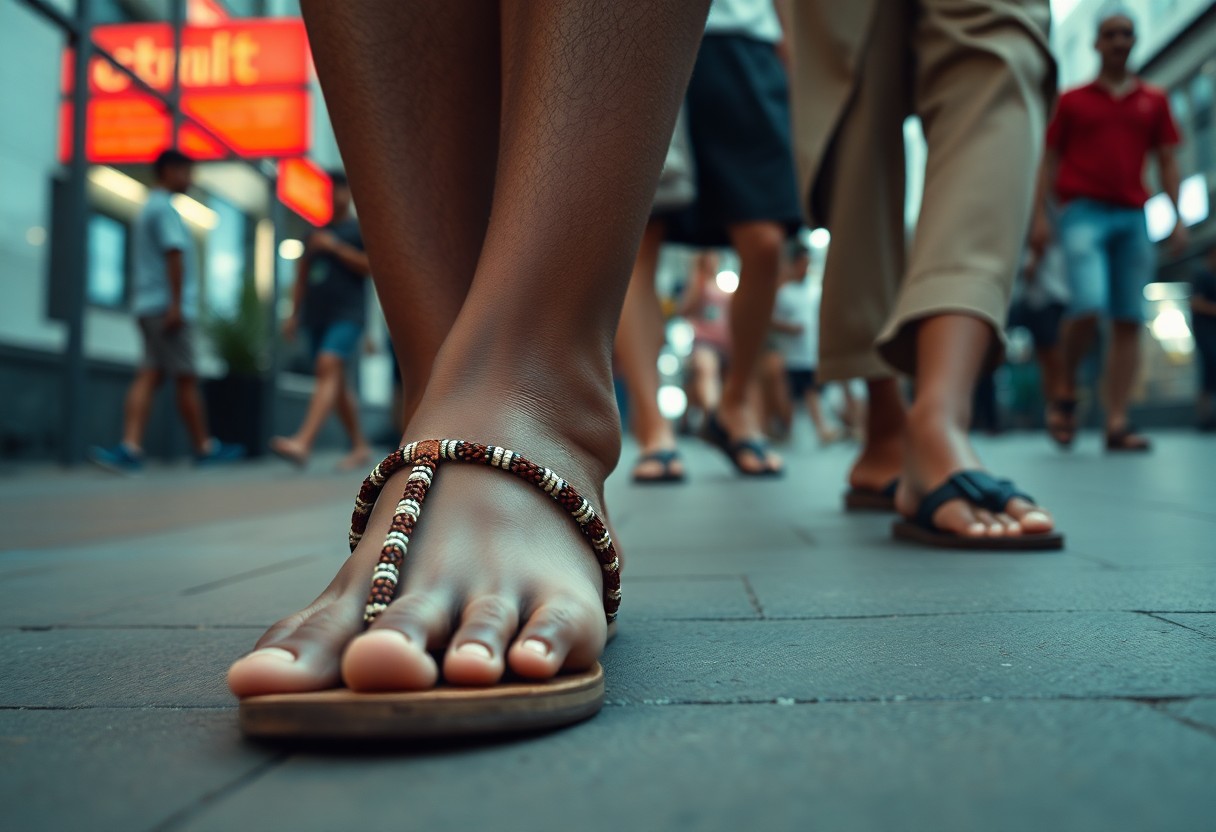
Connecting Historical Footwear Traditions with Contemporary Innovations
The modern footwear industry represents a vibrant tapestry that intricately weaves together ancient traditions and innovative designs, fostering a rising appreciation for barefoot footwear. This journey not only pays tribute to traditional indigenous methods but also adapts these practices to align perfectly with contemporary lifestyles. By recognising the importance of historical techniques, you can unveil an exciting fusion of cultural respect and practical aesthetics within your everyday footwear choices, thereby enhancing your personal style while honouring the rich legacy of the past.
Comparing Indigenous Foot Conditioning Techniques with Modern Approaches
Across various global indigenous cultures, distinctive conditioning techniques have been used to fortify feet for navigating diverse terrains. Practices such as walking barefoot on varied surfaces have strengthened the arches and muscles in ways that many modern interpretations struggle to emulate. While contemporary minimalist footwear may aim to replicate these benefits, they often fall short of offering the authentic experience of genuine contact with the earth, which is essential for fostering natural foot strength and flexibility. Engaging with these time-honoured practices provides a comprehensive understanding of foot health that modern designs frequently overlook, illustrating the depth of knowledge embedded in these traditional methods.
Charting the Progression of Military Footwear: From Ancient Caligae to Modern Tactical Boots
The story of military footwear is a fascinating chronicle of adaptation and innovation, evolving from the durable Roman caligae, designed for traction and longevity, to today’s tactical boots that seamlessly blend protection with agility and comfort. A thorough examination of these transitions reveals a consistent theme: in challenging environments, functionality is paramount, necessitating equipment that enhances soldiers’ endurance and mobility.
The Roman caligae represented a sophisticated response to military requirements, crafted from robust leather with an open-toe design for optimal breathability. This ancient footwear was equipped with thick soles that effectively absorbed shock and provided essential traction, crucial in combat scenarios. Fast forward to the present, and tactical boots are now constructed using modern materials like Kevlar and waterproof membranes, which significantly enhance durability and overall performance. These contemporary designs incorporate padded collars and advanced cushioning systems aimed at reducing injuries during demanding military operations. Recognising the legacy of military footwear sheds light on how historical styles have laid the groundwork for present-day innovations, merging heritage, functionality, and cutting-edge technology to meet the evolving requirements of today’s warriors.
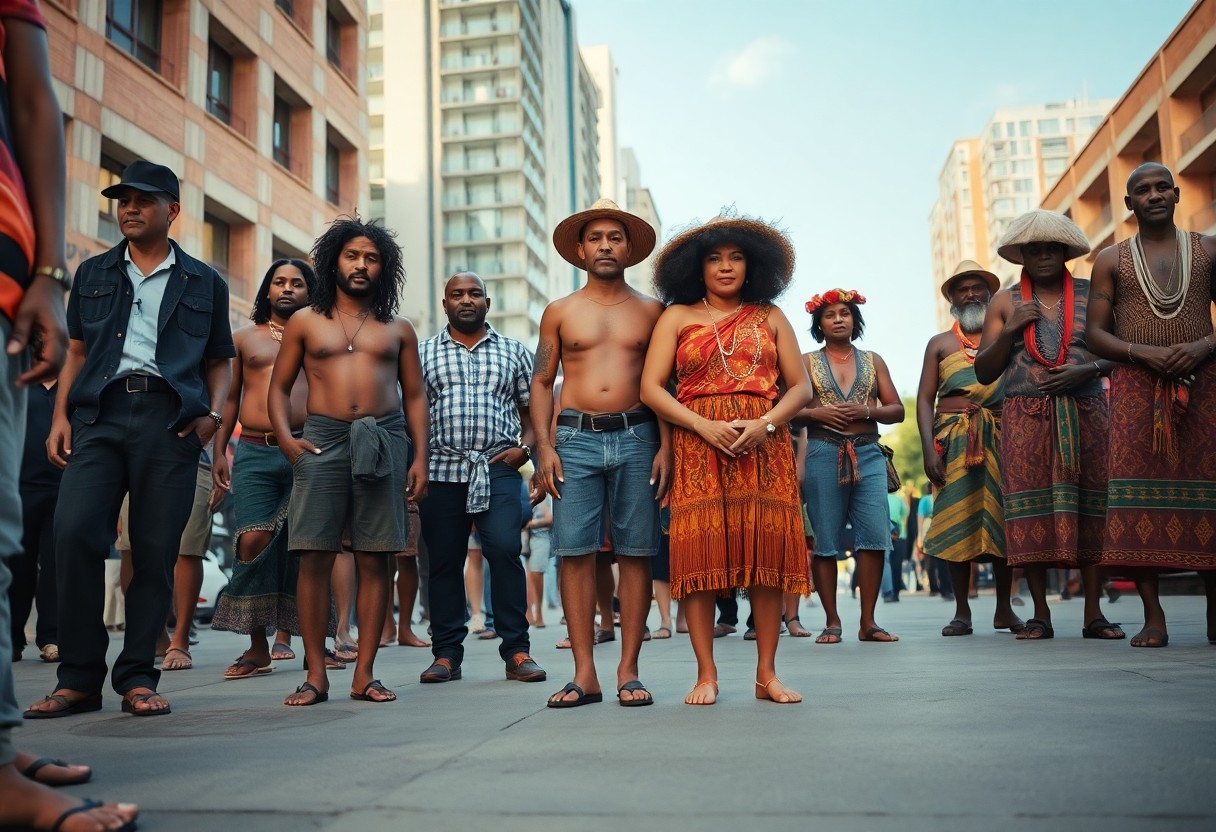
Investigating the Footwear Choices in Urban and Rural Contexts: Cultural Perspectives
The differing footwear selections made in urban and rural settings reveal substantial cultural and practical distinctions. Urban environments often prioritise style and brand identity, while rural areas may emphasise practicality and durability. As barefoot footwear gains popularity, urban residents increasingly embrace its minimalist design, viewing it as both a fashion statement and a means to achieve perceived health benefits. In contrast, individuals in rural regions may exhibit reluctance to adopt these styles, influenced by traditional values and the practical demands of their surroundings.
Spotlighting the Emerging Trends in Urban Adoption of Barefoot Footwear
In metropolitan areas, there is a discernible shift towards the acceptance of barefoot footwear, with adoption rates steadily rising over the past decade. This trend is driven by various factors, such as a heightened awareness of health, a growing interest in natural movement, and the influence of fitness trends like yoga and running. Recent surveys indicate that approximately 35% of urban dwellers actively seek out barefoot-style shoes, showcasing a cultural shift towards embracing innovative body mechanics and enhancing overall well-being.
Exploring Gender Dynamics in Barefoot Footwear Adoption: Who is Leading the Change?
Gender dynamics significantly influence the acceptance of barefoot footwear, as distinct motivations underlie the choices made by men and women. Women often confront greater societal pressures concerning fashion and aesthetics, which may hinder their willingness to adopt minimalist styles. In contrast, men may be more driven by the performance and health advantages associated with these shoes, resulting in higher adoption rates among male consumers.
Further exploration of the gendered aspects of barefoot footwear adoption reveals that societal expectations profoundly shape women’s decisions. Women frequently navigate a landscape where ideals of beauty and fashion overshadow practical health benefits. Research indicates that approximately 45% of men in urban settings are inclined towards barefoot shoes, compared to only 30% of women. Female consumers often grapple with balancing aesthetics and functionality, making them more cautious when evaluating the design of barefoot footwear against their desire for comfort and support. By empowering women through targeted awareness campaigns and showcasing fashionable barefoot options, their willingness to engage with this trend could increase, potentially reshaping urban footwear narratives and promoting inclusivity across genders.
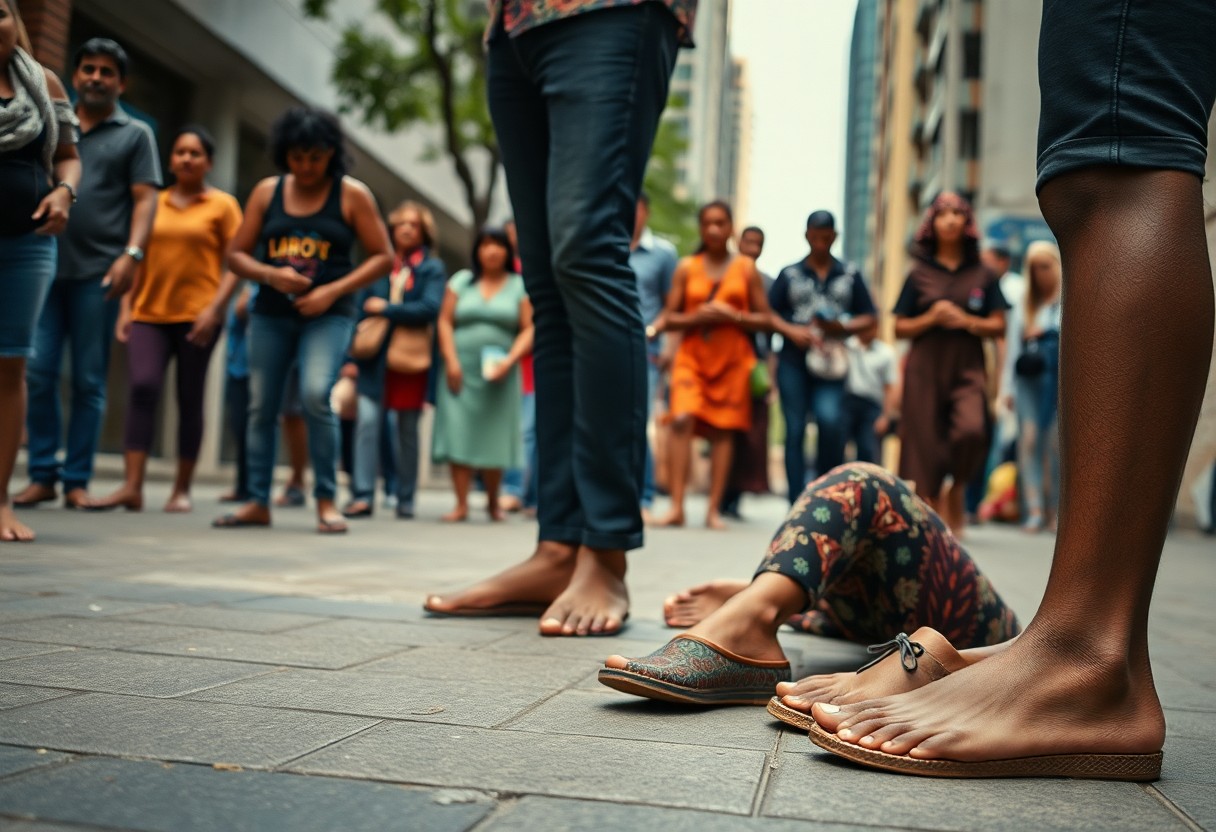
Transformational Technologies Paving the Way for the Future of Barefoot Footwear
As the demand for barefoot footwear continues to soar, innovative technologies are emerging to revolutionise your experiences with comfort and performance. Advances in materials science and personalised fitting techniques promise not only to enhance functionality but also to tailor your walking experience, merging time-honoured wisdom with contemporary design principles. We are entering a new era where your footwear becomes as unique as the journey it accompanies, leading to improved comfort and performance.
Utilising 3D Scanning Technology for an Exquisite Fit
The advent of 3D scanning technology is transforming the customization of barefoot footwear, allowing for a precise fit that conforms to your unique foot shape. Rather than being confined to standard sizes, your shoes can be intricately crafted to align with the contours of your feet, significantly enhancing comfort while minimising the risk of injury. The availability of custom-fit options will not only elevate your walking experience but also render barefoot shoes accessible for individuals with diverse foot shapes and sizes, ensuring everyone can enjoy the benefits of this innovative footwear.
Integrating Smart Sensors: The Future of Footwear Technology
The integration of smart sensors into barefoot footwear is poised to redefine the industry by embedding technology directly into the soles. These groundbreaking features can monitor various metrics, such as distance travelled and foot pressure, providing you with invaluable insights to optimise your walking or running habits. Equipped with real-time data, you can adjust your activities to enhance performance and safeguard your well-being.
Imagine having access to real-time analytics during your walks or runs. Smart sensors can track your gait, alerting you to any irregularities that could lead to injury. Some forward-thinking brands are already developing footwear capable of analysing your foot's impact on different terrains, offering personalised recommendations for style or cushioning adjustments on the fly. This innovative integration fuses smart technology with the traditional barefoot philosophy, ensuring you maintain a natural stride while leveraging the latest advancements in wearable tech. The potential to enhance sports performance, assist rehabilitation, and improve everyday comfort is boundless, fundamentally reshaping how you interact with your environment with every step.
Reflecting on the Journey of Barefoot Footwear: A Cultural Perspective
Your exploration of the cultural anthropology surrounding barefoot footwear unveils a rich narrative woven from the threads of Aboriginal traditions to modern urban practices. By embracing the principles of natural movement and connection to the earth, you gain valuable insights into how this footwear philosophy transcends mere fashion, profoundly influencing lifestyle choices and community values. As you consider these diverse perspectives, reflect on how your footwear choices can embody and promote a deeper understanding of cultural heritage and adaptability in our contemporary world.
The Article Cultural Anthropology of Barefoot Footwear: From Aboriginal Traditions to Modern Urban Adoption appeared first on My Shoes Finder
The Article Cultural Anthropology of Barefoot Footwear: Traditions to Today Was Found On https://limitsofstrategy.com
The Article Cultural Anthropology of Barefoot Footwear Through the Ages found first on https://electroquench.com


